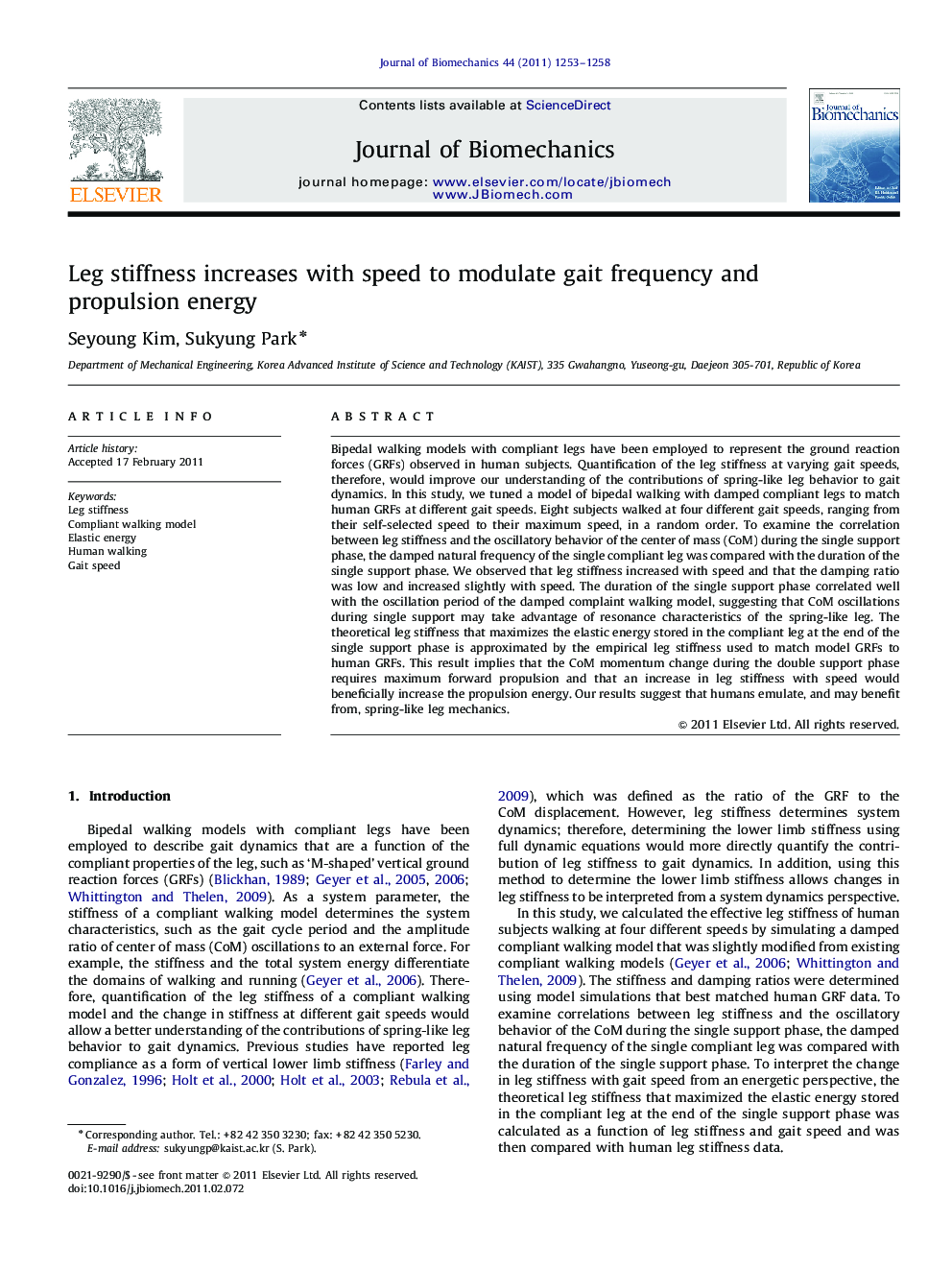| کد مقاله | کد نشریه | سال انتشار | مقاله انگلیسی | نسخه تمام متن |
|---|---|---|---|---|
| 873075 | 910298 | 2011 | 6 صفحه PDF | دانلود رایگان |

Bipedal walking models with compliant legs have been employed to represent the ground reaction forces (GRFs) observed in human subjects. Quantification of the leg stiffness at varying gait speeds, therefore, would improve our understanding of the contributions of spring-like leg behavior to gait dynamics. In this study, we tuned a model of bipedal walking with damped compliant legs to match human GRFs at different gait speeds. Eight subjects walked at four different gait speeds, ranging from their self-selected speed to their maximum speed, in a random order. To examine the correlation between leg stiffness and the oscillatory behavior of the center of mass (CoM) during the single support phase, the damped natural frequency of the single compliant leg was compared with the duration of the single support phase. We observed that leg stiffness increased with speed and that the damping ratio was low and increased slightly with speed. The duration of the single support phase correlated well with the oscillation period of the damped complaint walking model, suggesting that CoM oscillations during single support may take advantage of resonance characteristics of the spring-like leg. The theoretical leg stiffness that maximizes the elastic energy stored in the compliant leg at the end of the single support phase is approximated by the empirical leg stiffness used to match model GRFs to human GRFs. This result implies that the CoM momentum change during the double support phase requires maximum forward propulsion and that an increase in leg stiffness with speed would beneficially increase the propulsion energy. Our results suggest that humans emulate, and may benefit from, spring-like leg mechanics.
Journal: Journal of Biomechanics - Volume 44, Issue 7, 29 April 2011, Pages 1253–1258